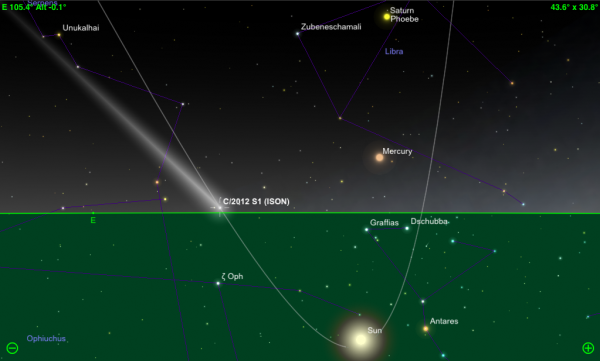When will we again see comet C/2012 S1 ISON in the morning sky?
Much depends on how bright the comet has become, thus how far it must be from the Sun’s glare before we can see it well. If the comet has become truly spectacular we may see the tail rising before the comet quite early. If it has disintegrated, we may see nearly nothing.
It is probably on the morning of Dec 3rd that we can start looking for the comet to be above the horizon at dawn. On this morning the comet will be 14° away from the Sun, rising at 05:58 HST as seen from the island of Hawai’i. On the 4th this will be 05:51 and 16°, on the 5th the angular separation will be 19° while rising at 05:43HST.
When planning your comet viewing keep in mind that the comet will rise nearly 25° north along the horizon when compared to where it was rising before perihelion. This is closer to due east, at about azimuth 100°.
Unlike some comets, the comet will not emerge into the evening sky after perihelion. It remains in the morning sky for earthbound observers. It will eventually be visible in the evening sky, but not for some time, a few weeks or more depending on the observer’s latitude. The high inclination of the comet’s orbit will take the comet through the northern constellations, into the circumpolar sky at the end of the year.
What morning will you first see the comet?


